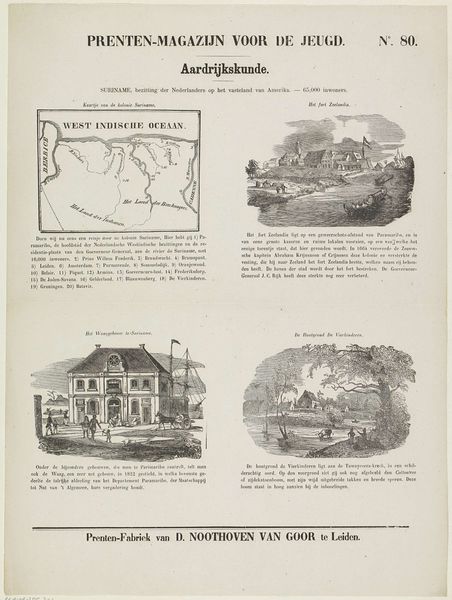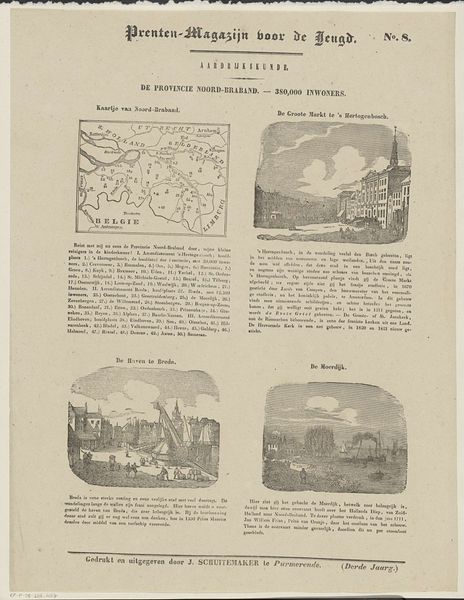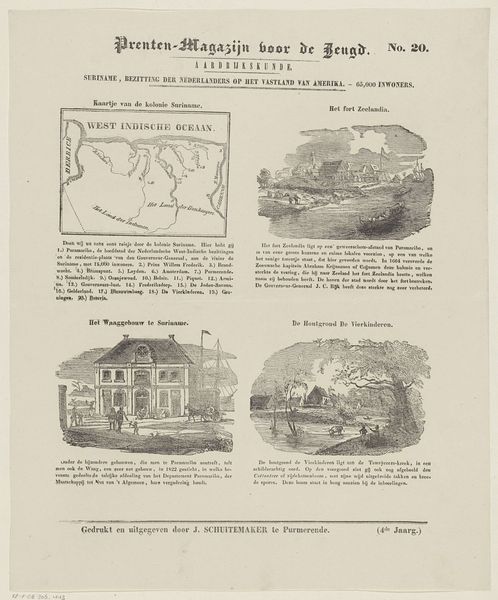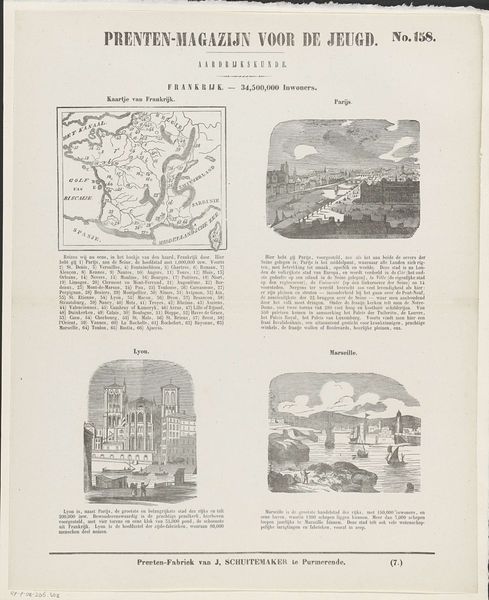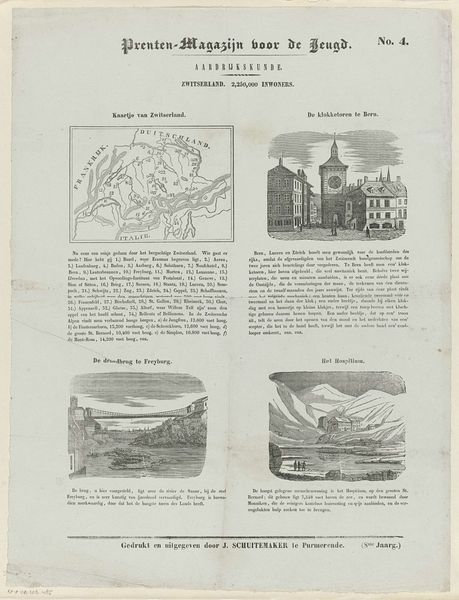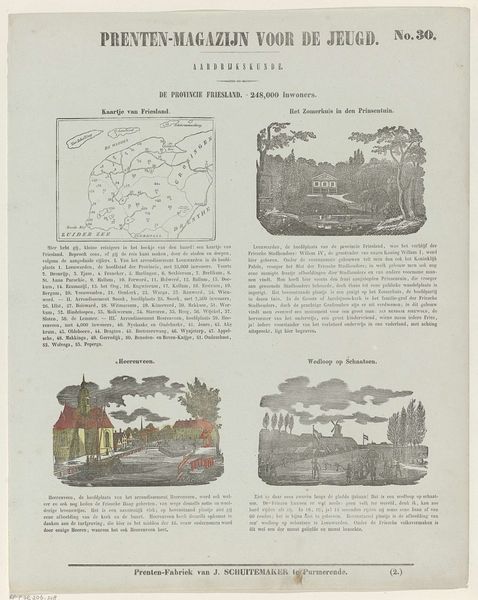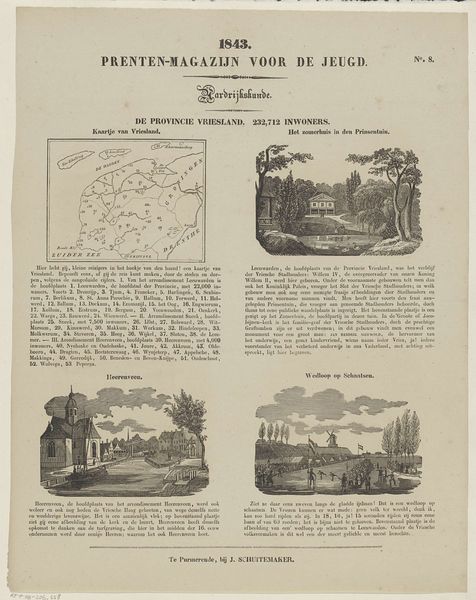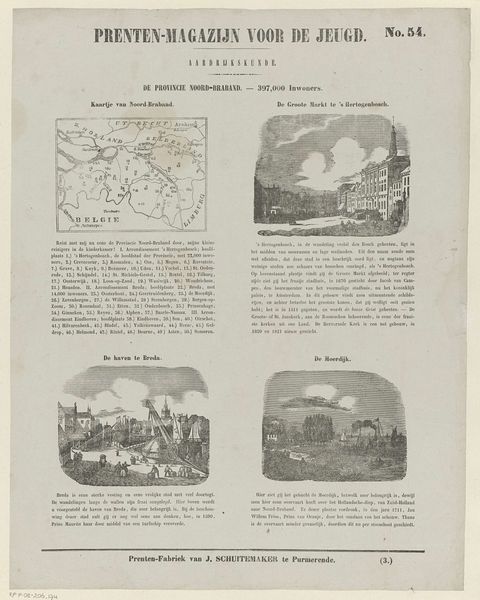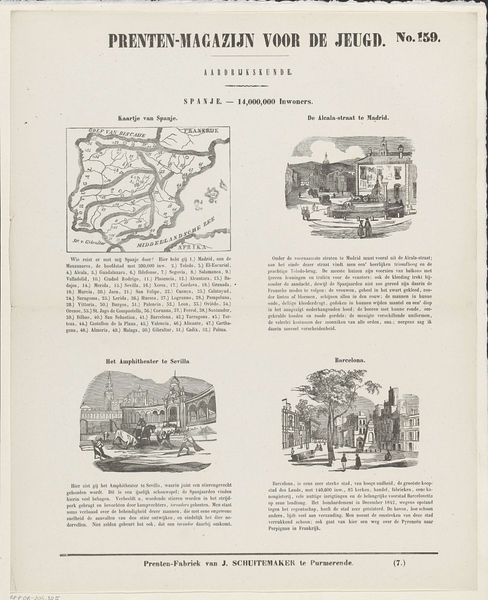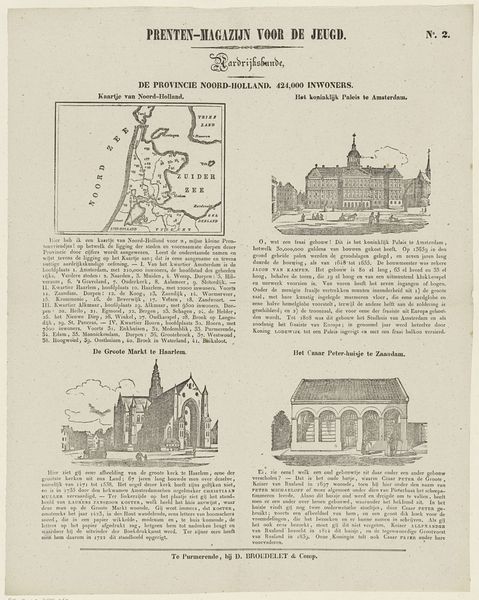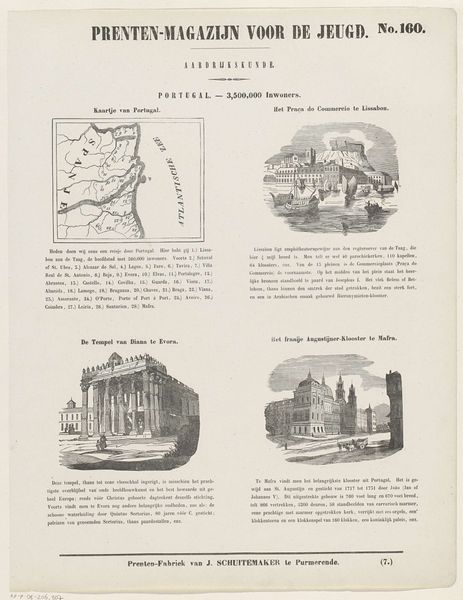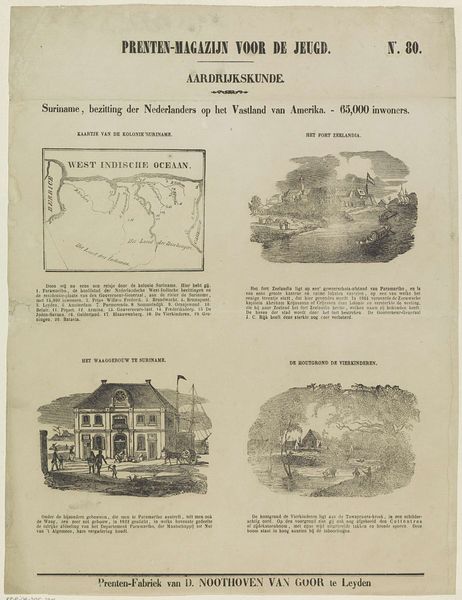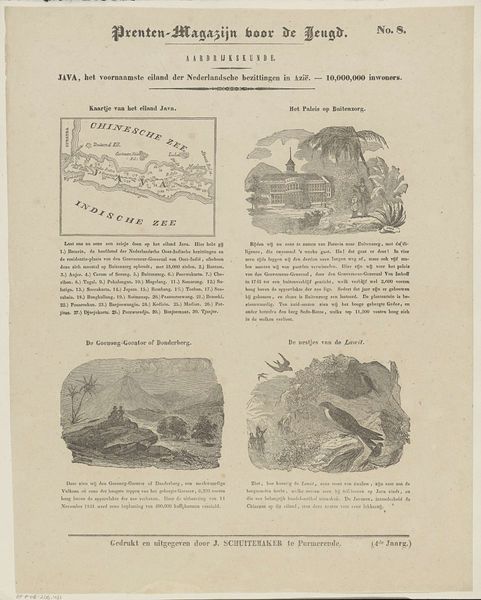
Suriname, bezitting der Nederlanders op het vastland van Amerika. - 65,000 inwoners 1850
0:00
0:00
print, engraving
#
aged paper
#
dutch-golden-age
# print
#
old engraving style
#
hand drawn type
#
landscape
#
personal sketchbook
#
journal
#
old-timey
#
sketchbook drawing
#
cityscape
#
storyboard and sketchbook work
#
word imagery
#
engraving
#
historical font
Dimensions: height 414 mm, width 330 mm
Copyright: Rijks Museum: Open Domain
Editor: This is a print from 1850 by Jan Schuitemaker titled "Suriname, Possession of the Dutch on the Mainland of America - 65,000 Inhabitants.” It’s interesting how it combines a map and landscape scenes. I’m immediately struck by the way it presents information so clinically, almost like a brochure, while simultaneously hinting at a much larger, more complex colonial history. What do you see in this piece? Curator: The "clinical" detachment you observe is a powerful element. Engravings like this, particularly those intended for youth, played a role in shaping cultural memory. The scenes, from the map highlighting Dutch claims to the depiction of "Fort Zeelandia" and "The Waaggebouw in Suriname", are laden with symbols. What emotions do these carefully chosen scenes and words evoke? Editor: A sense of curated dominance, almost… sanitized. The scenes feel like illustrations for a lesson, focusing on the structures and geography without acknowledging the complexities of colonialism and slavery. Is that a fair interpretation? Curator: Precisely! The imagery strategically omits certain narratives. What does the inclusion of population figures – "65,000 Inhabitants" – imply alongside depictions of infrastructure? Think about the stories that are left untold. Editor: It makes the inhabitants sound like resources, something to be counted and managed within the colonial project, rather than individuals with their own histories and rights. Curator: Indeed. Notice the style of the "historical font." Even that detail connects back to cultural identity and the need to display a controlled and constructed idea of superiority. What is visually prioritized and what is minimised in these images? Editor: The grand architecture and controlled landscapes are prioritized, while people—especially the indigenous populations—are either absent or appear as small, subservient figures. Seeing this laid out so clearly, even in a piece aimed at children, really highlights how pervasive these colonial narratives were. Curator: This reminds us that seemingly simple images carry significant weight in shaping cultural perceptions. I appreciate you seeing the symbols of erasure present.
Comments
No comments
Be the first to comment and join the conversation on the ultimate creative platform.
